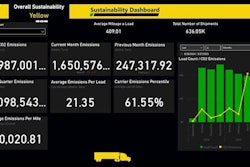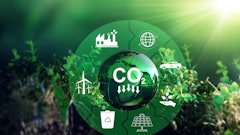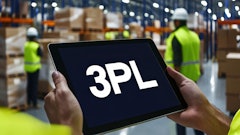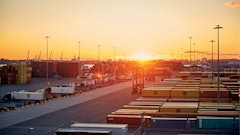
Supply chains are one of the most complex aspects of any organization, but this is particularly true for manufacturers dealing with a huge plethora of factors from production through to final sales of their goods.
Alongside these numerous factors that they’re juggling are a multitude of challenges that can seriously impede logistics and bring supply chains to a screeching halt.
One of the most concerning supply chain threats is climate change, which may lead to net economic losses of between $3.75 trillion and $24.7 trillion by 2060. These economic losses range from workers suffering from heat exposure to trickle-down effects from disrupted operations at mines to extract raw materials. Although efforts are being made to curb global warming, there’s still a long way to go, and we’re feeling the hit from its consequences in the meantime.
That’s why strengthening supply chain resilience must be a top priority for manufacturers in order to literally and figuratively weather the storm that is these environmental disruptions. In order to do so, manufacturers must overcome barriers to supply chain visibility and data processing, which have been undermining their ability to effectively plan routes and logistics and fortify sustainability efforts.
Let’s dive into these challenges and technology’s role in overcoming them.
Ongoing environmental woes
Natural disasters, such as Hurricane Milton in Florida, are notorious for wreaking havoc on supply chains and logistics, but as climate change worsens, these extreme weather events are anticipated to become more common. For manufacturers, they’re not something that is far off on the horizon but a very real threat to their operational and logistical well-being, costing them precious time, money, and resources if not handled properly.
Having a holistic view of the full supply chain is only growing in need so manufacturers can identify operational and supply chain risks arising from climate change. Manufacturing companies are now required to disclose this information under mandatory climate disclosures like the Securities and Exchange Commission (SEC) in the United States and the European Union (EU).
Besides reporting on climate risks, organizations are under increasing pressure to minimize waste. Many manufacturers are often burdened with the problem of wasted miles, creating a paradox wherein waste and cost issues are exacerbated. Shockingly, empty miles account for 20-35% of trucking miles in a supply chain. However, weaknesses in route planning and coordination are proving major hurdles to overcoming these key challenges.
Another significant challenge is carbon emissions, and this problem is multifold. Accurately measuring and monitoring these from Scope 3 activities is notoriously difficult to stay on top of. That’s because Scope 3 embodies the entire supply chain, not just the immediate carbon outputs of a manufacturer’s operations, as is the case in Scopes 1 and 2. The difficulty of reporting on Scope 3 emissions leads to manufacturers running the risk of unintentionally failing to comply with regulatory guidelines on emissions reporting.
Ensuring that accurate data is continuously collected and analyzed is crucial, but this already complex process is made worse when unexpected disruptions take place. That means there’s a pressing need for technology to ensure those real-time insights are being yielded to organizations.
How GenAI applications support supply chain reporting
Generative AI (GenAI) applications are proving transformative in helping manufacturers tackle challenges in sifting through vast swathes of data. Specifically, their ability to comprehensively process structured and unstructured data from multitudes of sources helps manufacturers drive visibility across their supply chain management.
Moreover, these applications facilitate real-time monitoring via instant analytics so manufacturers can be alerted to any anomalies or disruptions as they happen. This strengthens their proactive risk management, empowering them to make better data-fueled decisions.
In terms of sustainability, supply chain managers can leverage solutions to unearth opportunities for reducing carbon emissions. GenAI often uses blockchain to bolster transparency around sustainability reporting and automate tracking of key data to make sure no stone is going unturned. That key data includes but is not limited to power consumption across factories, transport emissions, and the carbon impact of suppliers’ production and operations. For ESG reporting, this is extremely valuable, as it helps manufacturers capture and process the full picture of greenhouse gas emissions across the value chain, which is the major challenge for Scope 3 carbon footprint reporting.
Other notable benefits of GenAI applications in supply chain management include better inventory management, demand forecasting, and automated risk assessment for vulnerabilities.
The role of location intelligence
Location intelligence is revolutionizing four key areas of supply chain management: smart mobility, load planning, risk monitoring, and strategic site selection. As a process, location intelligence incorporates Geographic Information Systems (GIS) data visualization and advanced analytics to interpret the spatial context of data so supply chain managers can map out patterns that might be otherwise overlooked.
Specifically, real-time tracking via location intelligence allows companies to pinpoint the status and location of goods, vehicles, and assets throughout the supply chain, further enhancing visibility. Additionally, location intelligence helps businesses understand supply chain dynamics by visualizing data on maps to gain insights into distribution and relationships among suppliers.
In terms of sales strategies, location intelligence technology is helping businesses in many different ways. Data-driven predictions provide insights into potential trends and market forecasts through location-based data that can help organizations adjust and refine sales strategies accordingly. This helps supply chain managers optimize route planning to tackle wasted mileage, thereby decreasing excess carbon emissions on transportation.
Another benefit of the solution is targeted customer insights around behaviors and demographics via geographic data. This data helps manufacturers keep a real-time pulse on opportunities and where to upweight sales.
Enter geospatial platforms to mitigate climate risks
AI is being used in geospatial platforms to help manufacturers analyze huge volumes of geospatial data that are crucial for planning routes and identifying risks tied to locations that may affect logistics and operations. It’s proving valuable to automate a significantly labor-intensive process that otherwise consumes valuable time, energy, and cost resources.
Geospatial platforms that include features like visualization tools and machine learning (ML) are crucial for data-driven decision-making so that manufacturers can quickly derive clear and actionable insights from complex datasets. For instance, this data can alert supply chain managers to divert routes in case of disruptive weather conditions especially as these become more volatile in certain locations as global warming worsens.
Arguably, one of its most crucial assets is its customizable analytics and visualization tools that come with personalized dashboards. This allows supply chain managers to keep a finger on the pulse of the most relevant data to match their needs and help them strategize risk handling more effectively as environmental threats arise.
Platforms that provide satellite imagery—via APIs, digital elevation models, and digital surface models—help manufacturers visualize details around factors like coordinates and traffic and weather information. This technology is helping supply chain managers overcome key challenges to forecast demand by gathering foot traffic and optimize routes via analytics from complex ML models embedded within the platform.
Technology has a clear role to play in helping companies be more proactive and aware so they can address sustainability challenges while strengthening their supply chain’s resilience and agility in light of climate disruptions. That includes curbing the impact of climate—whether that’s disruptive weather or carbon emissions on their supply chain. The most innovative platforms are leveraging a combination of features to break down complex datasets from a variety of sources so that supply chain managers can identify key patterns and uncover potential threats ahead of time.


















